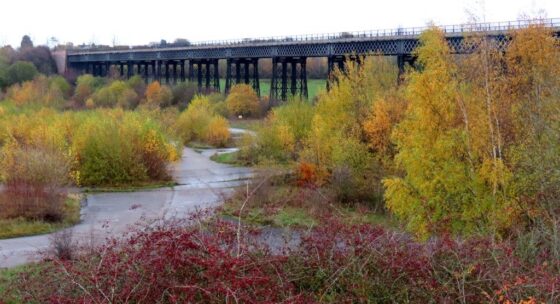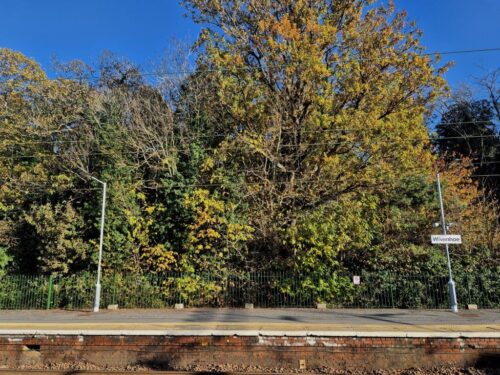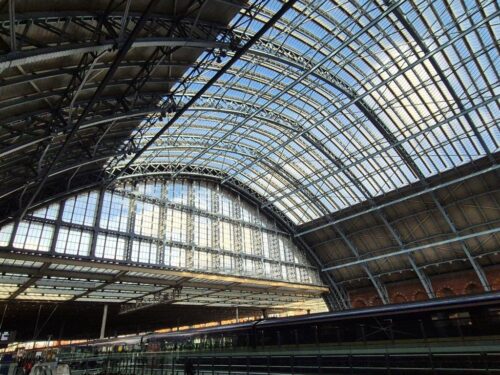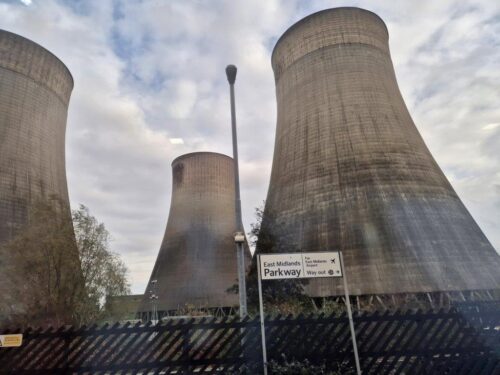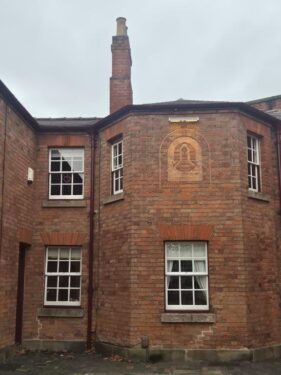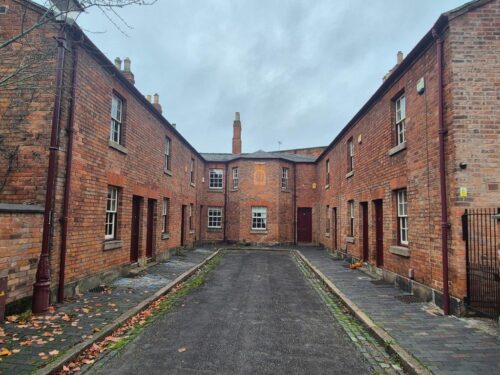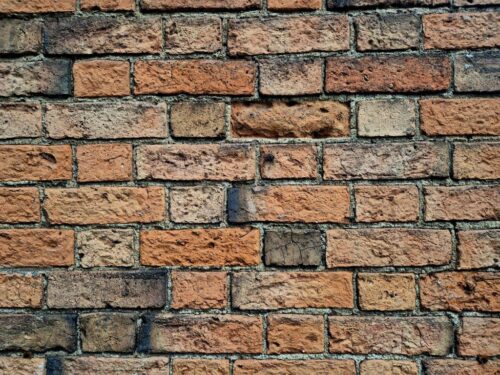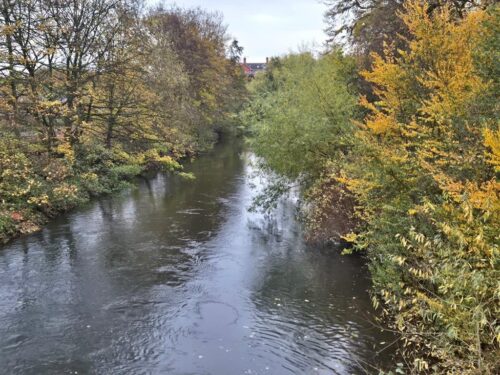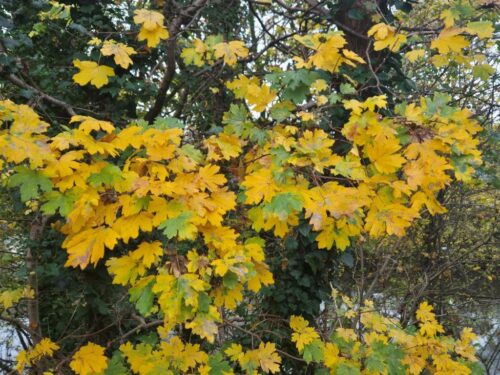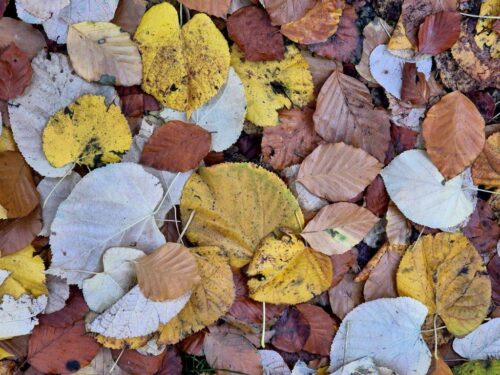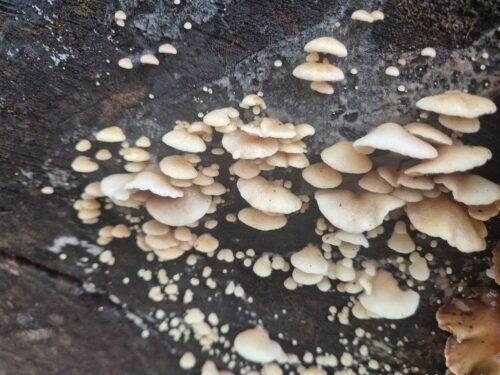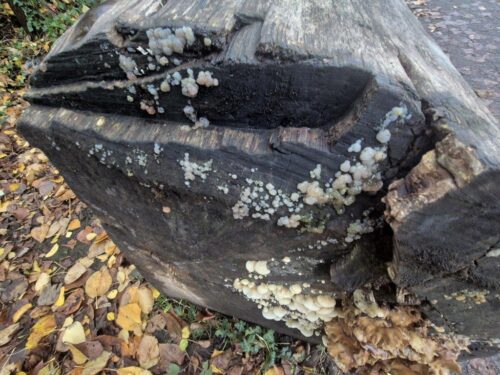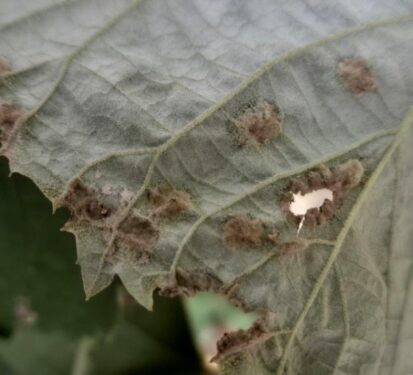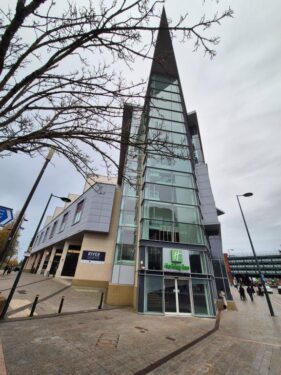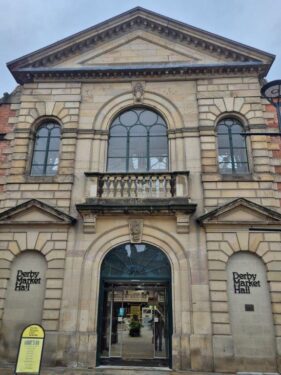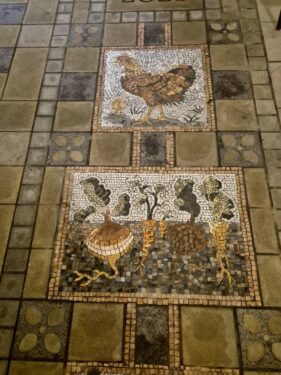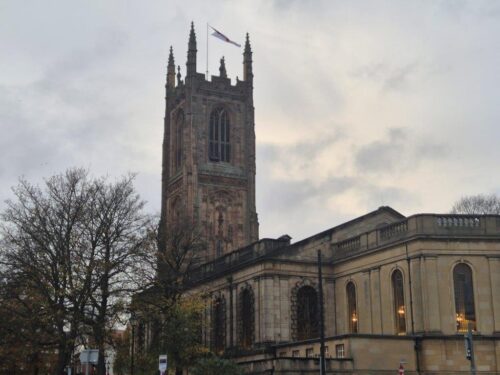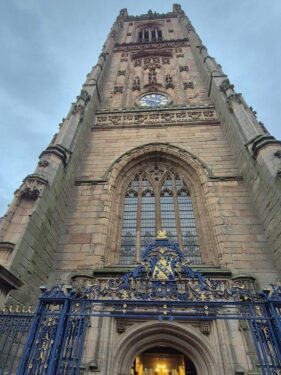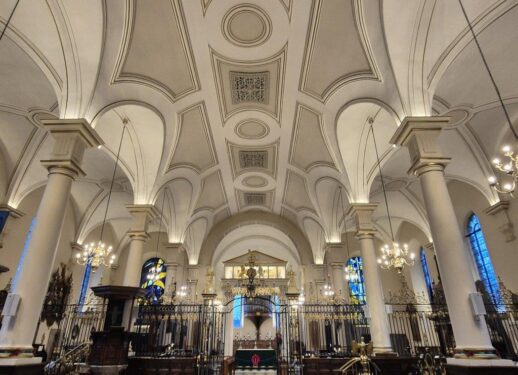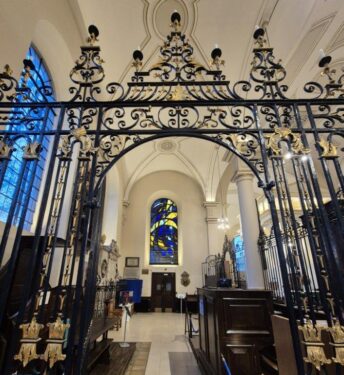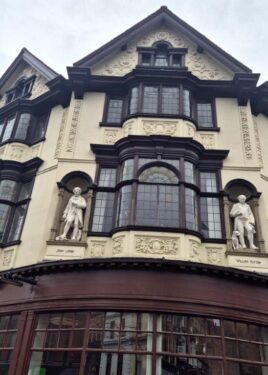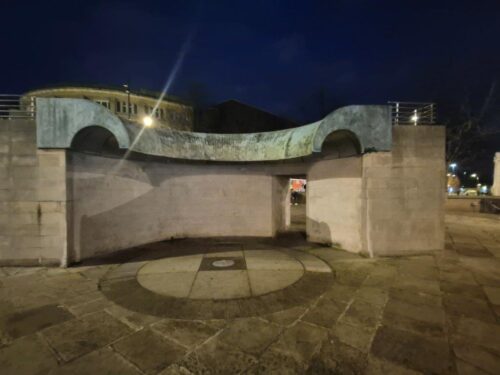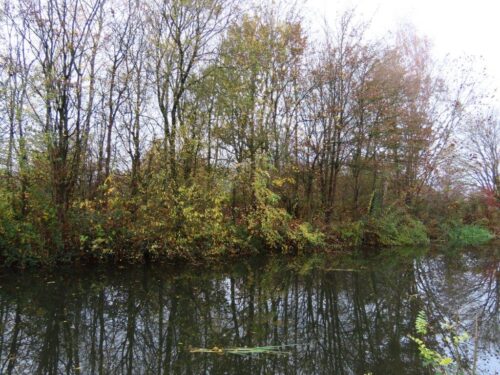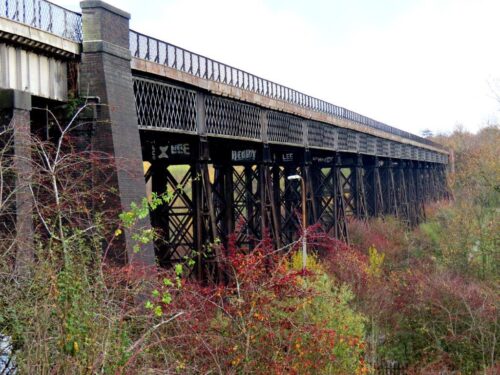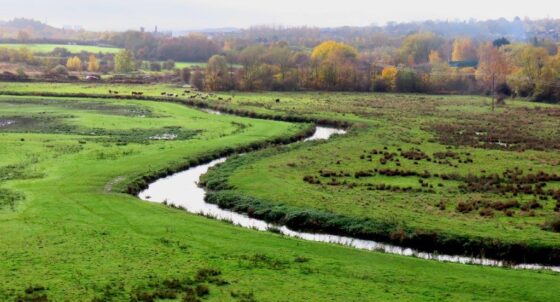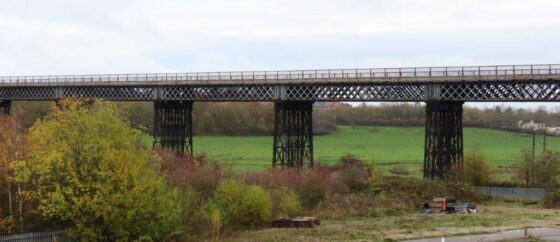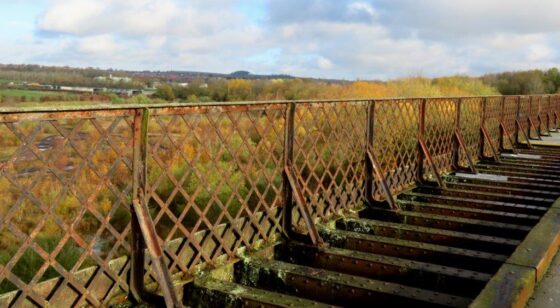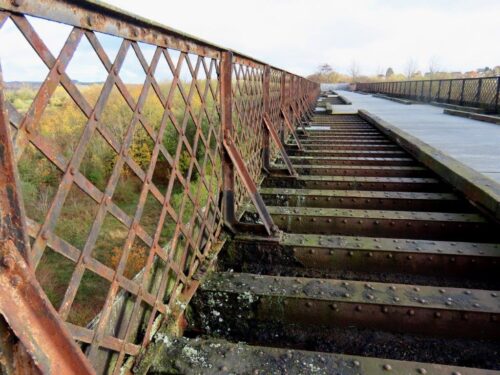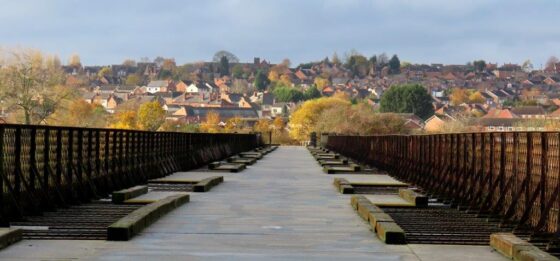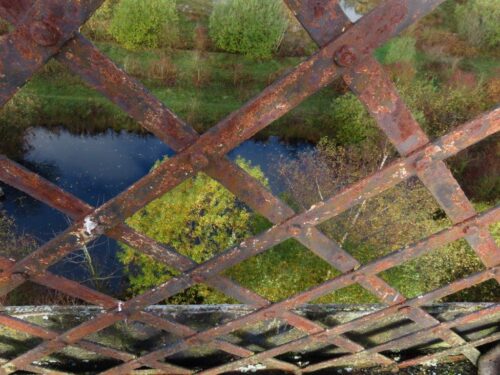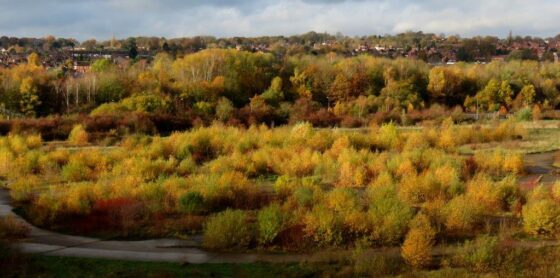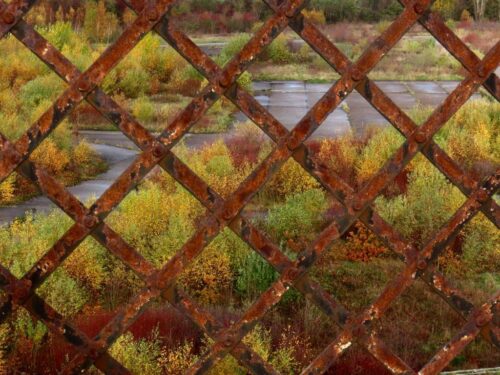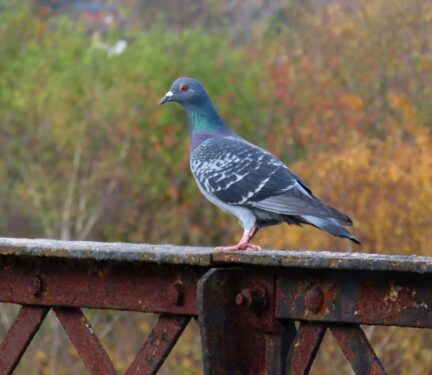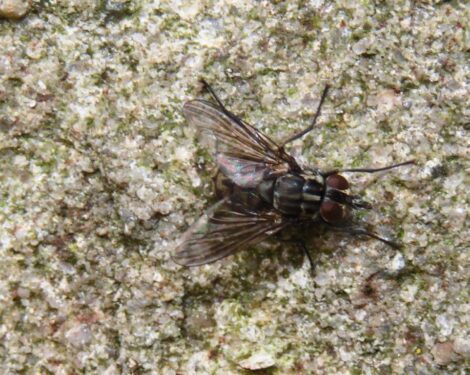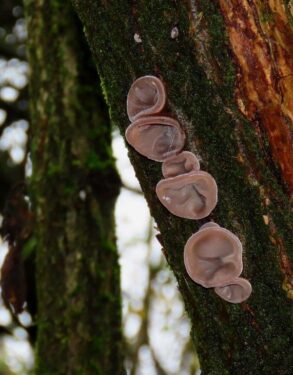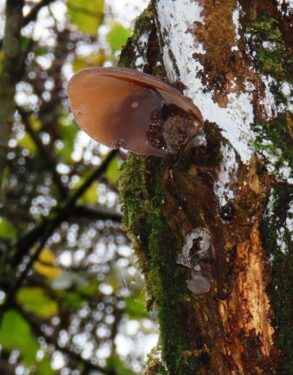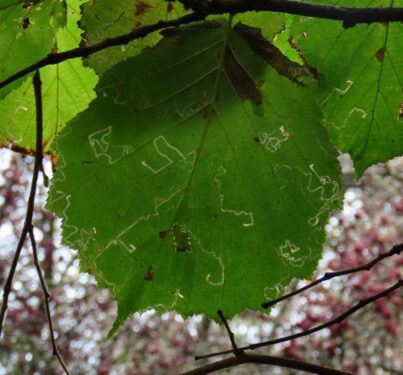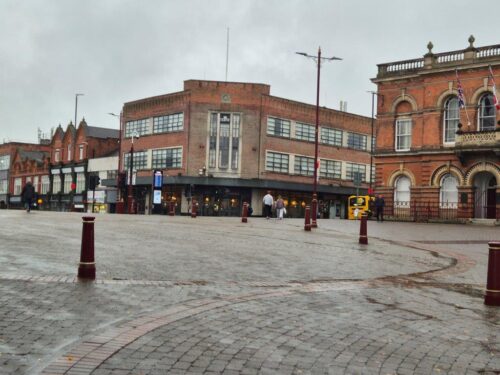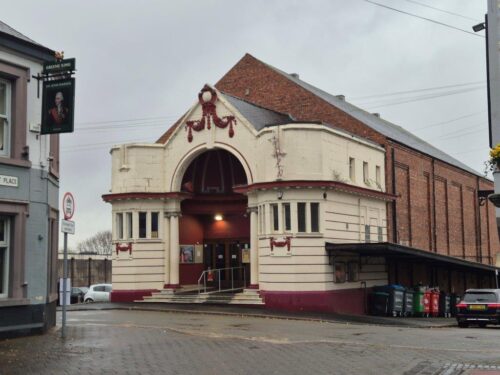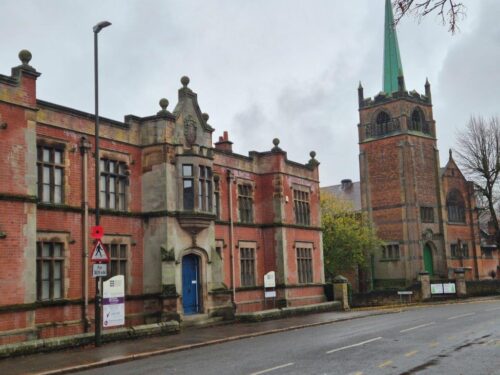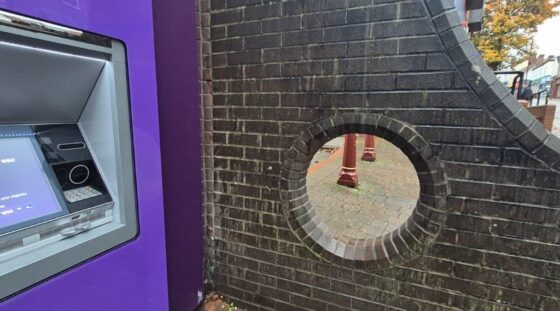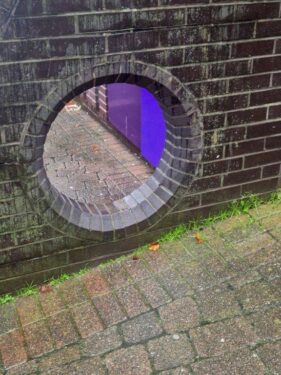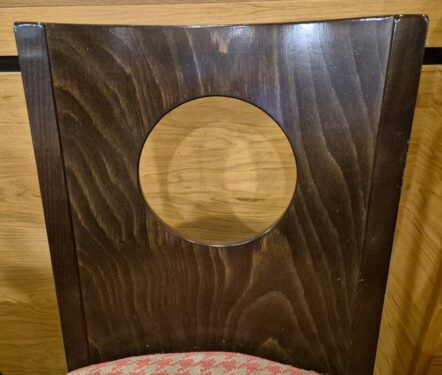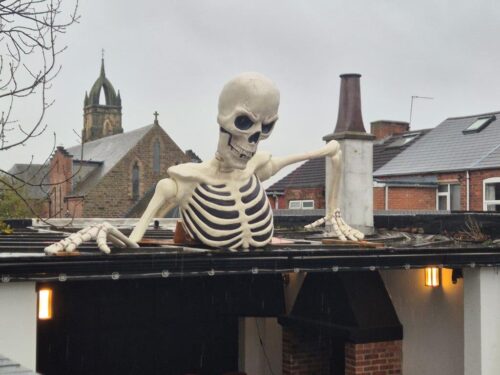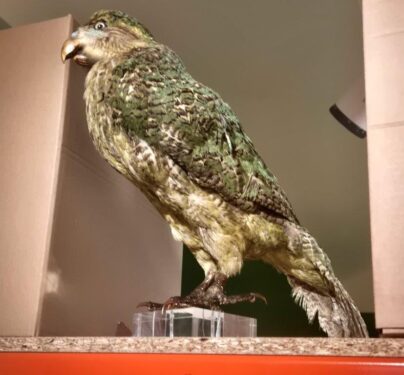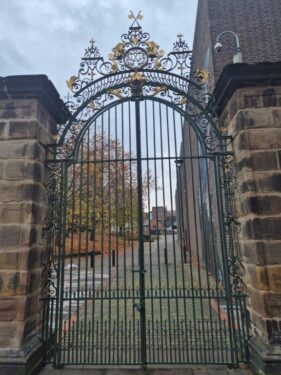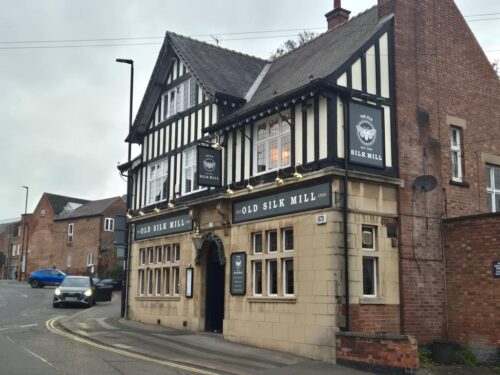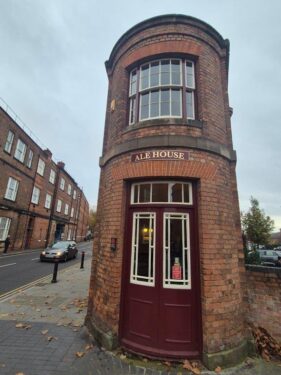Another of our monthly short breaks inspired by a railway TV programme, not this time Michael Portillo’s journeys, but Tim Dunn and his series on railway architecture. It was in the first episode of the series that we saw the Bennerley Viaduct, the ‘Iron Giant’. One of only two remaining wrought iron viaducts left in Britain, we learned of its rescue from dereliction and opening to pedestrians, and so on a lovely sunny Sunday morning, we were heading there.
First to London (via a stop at the newly opened Beaulieu Park Station), to St Pancras with its wonderful, vast single-span glass roof – although it has to be said the refurbishment 15 years ago was a missed opportunity to capture solar energy, like we saw a month ago in the even more impressive Rotterdam Centraal Station.
Thence to Derby, stopping amongst other places at Market Harborough (the destination for our forthcoming July trip) and East Midlands Parkway, one of the high points of last November’s exploration of the Trent Valley, those iconic cooling towers, a memorial to a hopefully receding age of fossil fuels…
Into Derby just after lunchtime, our first stop of course was for a drink, in Waterfall, imposing but sadly lacking atmosphere, in the 1892 Midland Railway Institute, one feature of a remarkable triangle of railway buildings. Built as a cultural and social centre for Derby’s rail workers, it once housed a large library and a ballroom with a stage and seating for 500 people.
The railway cottages themselves date back half a century previously to the arrival of the railway network into Derby, and are considered to be the first and one of the finest examples of such a purpose-built development to house the workers. Threatened with demolition in the 1960s, the estate is now restored and listed. On one of the other angles of the triangle is the Brunswick Inn which formed a neat bookend to our trip.
All the buildings are brick, from presumably local clay, a lovely rich red in colour, matching perfectly the colours of autumn strewn across the pavements:
From there , we followed the green corridor along the River Derwent among the autumn leafscapes and groundscapes, with a few fungi and galls, especially on Lime.
And before we expected (we hadn’t appreciated just how compact the city is), we were at our hotel, on the edge of the city centre. Holiday Inn – Derby Riverlights may be very modern but it is a rather striking design, with good views of the city, very comfortable and good value. The food was good as well, including breakfast (overcooked eggs aside) at which the presence of paper carrier bags made one feel very comfortable taking things from the breakfast buffet for consumption later in the day!
Neither had we realised just how many impressive historic buildings there are. The mid-19th century Market Hall, reopened after refurbishment only six months ago, is one such, both inside and out although the inside seems not yet to have attracted sufficient traders to drive out the feeling of it being a cold, empty void.
But the Cathedral was a much more welcoming presence, except for the annoyingly over-repeated recorded bell peals (which later on in our stay started to emanate from a completely different church!)…
Although rather modest from the outside, it was lovely and airy inside, flooded with light from the largely clear glass windows, the walls and ceilings relatively free of intrusive ornamentation; some organ practice was a delightful added bonus.
This made for much easier appreciation of the artistic features of the church – effigies (including Bess of Hardwick), two stunning modern stained glass windows and decorative wrought ironwork everywhere…
… and then the Derby Plank, a lovely painted bit of wood whose symbolism and function is shrouded in history and mystery, but probably dates from around 1600, give or take a decade or two.
Around the city centre, there were many other historic buildings, some of which we saved for our last day. The Standing Order Wetherspoons pub, a repurposed bank, was worth a visit for its secular interior décor, and then there was the rather strange structure in the market square. Memorial or urinal, you decide?! In fact it seems once to have been a piece of public art with water flowing over the top in a pleasing waterfall, but the costs of maintenance fell foul of local authority cash constraints in 2016 and since then simply gathers pigeon poo.
A look at the weather forecast next morning showed us a clear slot of some three hours up to lunchtime before cloud and rain that was coming in for the rest of our stay. So we mobilised quickly and headed out by bus for Ilkeston and the Bennerley Viaduct, the main reason for our visit: oh, the joys of a proper, modern, comprehensive bus station. Colchester could usefully take note!!
We could not have timed the break in the weather better. Calm, sunny, glorious autumnal weather for our walk along the Erewash Canal was perfect, the distant lock gates reminding Jude of giant dragonflies at rest, and the ambience ruined only by the ugly spraypaint handiwork of local ‘patriots’…
And before long the viaduct appeared, almost twenty metres in the sky, spanning the valley, over the railway line, the county boundary and River Erewash, a name that seems to spring straight from the realms of Tolkein’s Middle Earth.
The wrought iron structure was a bespoke solution when it was built in 1876 arising from the need to keep the weight of the viaduct down, given that the underlying ground is riddled with poorly mapped coal-mines. The line was closed to rail traffic in 1968, and much of the railway infrastructure removed, but fortunately the viaduct remained intact, a beacon of Victorian ingenuity.
But only just. Time has taken its toll, and there have been several plans to demolish it, though its wrought iron construction meant that it would have to have been demolished bit-by-bit, the reverse of its original construction, which always proved prohibitively expensive. And so the resources were found to make it safe, and open it to pedestrian and cycle traffic in 2022, although as yet the eastern access ramp is not finished.
No matter, walking there and back across the 400 metre span without the risk of being mown down was simply delightful, with lofty views southwards over the green valley towards the high ground of Ilkeston and the Trent Valley beyond.
And looking north a completely different picture, a developing nature area based on a brownfield site, with Silver Birch and Aspen trees turning golden in the low sunlight.
The autumn colours complemented perfectly the rusting structure in mutual recognition of the passage of time…
It was a great vantage point for birdwatching, with more Redpolls than I have seen in a long time, plus Goldfinches, Fieldfares and Ravens. Feral Pigeons have adopted the structure as if it were a cliff, and the south-facing brick and stone piers at either end proved attractive to basking insects and other invertebrates: the micromoth Blastobasis adustella, Stable Fly Stomoxys calcitrans, the woodlouse Porcellio scaber and the spider Platnickina tincta.
Back on terra firma we walked through a section of developing woodland between canal and railway line, finding a few fungi including Jelly-ear, luxurious aerial mosses, the micromoth leaf-mines of Stigmella microtheriella in Hazel and a dew-dropped Hawthorn Shieldbug.
Particularly under Wild Cherry trees, the groundscapes were spectacular, as were the raindrops hanging below Alder cones, the colour of black tea, presumably stained by tannins leached out from the woody cones.
As we walked back into Ilkeston, the weather closed in and the forecast rain started to fall heavily. But what a lovely little town, with a real high street, a market square, Art Deco commercial buildings, and an historic cinema dating back to 1913…
And a hole. Look on the Web for tourist attractions in Ilkeston and it isn’t long before you find the ‘Nat West Hole’, apparently created to reassure uses of the ATM ‘hole in the wall’ that the wall isn’t hiding ne’er-do-wells. As impressive in the rain as at any other time I guess, and it did get me photographing analogous structures, for example in the back of the Costa chairs!
And that’s not all. A walk through town took us past the General Havelock pub. Right time, right place: it was raining! Also very welcoming: being ‘Muffin Monday’ we were treated to a free, huge, delicious blueberry muffin with our drinks.
Ilkeston seems to do ‘big’: the Iron Giant, the giant muffin and at our final stop, the Ilkeston Giant. Just down the road was Stanton Road Cemetery, the last resting place of Samuel Taylor who died aged 59 in 1875; at 7 feet 4 inches (224 cm) tall, he became a local celebrity and earned a good living performing in travelling fairs and freak shows.
By now the rain had really set in so it was back on the Ilkeston Flyer to the comfort of our hotel room, before venturing out later to sample very well prepared food from all four corners of the culinary world at Cosmo World Buffet, making good use of a retired cinema.
Our third and final day dawned dull and cool, though the promised rain never materialised. Not that it would have mattered too much: we had planned a museums and pubs sort of day. First it was Derby Museum & Art Gallery, with collections of local porcelain, art of Joseph Wright, natural history and much more. But for us, the highlights were the visiting exhibition Human Natures, exploring our place in the natural world and presenting strong messages, and the remarkable surrealist art of Marion Adnams.
Then we were down to the Museum of Making in the former Derby Silk Mill that forms the downstream end of the 25 km-long Derwent Valley Mills World Heritage Site that runs all the way to Matlock Bath. The site encompasses a series of 18th- and 19th-century cotton and silk mills, considered to be of high historical and technological interest as being the place where the modern factory system was developed and established. It was in effect the birthplace of the industrial revolution, which like it or not cannot overestimated in respect of its importance of it in shaping the world we now know. And reading about it made us think we should visit the whole site on another occasion, as all are conveniently linked by rail – one perhaps for 2027?
Opened just last year, the museum is housed partly in the restored silk mill, itself a rebuild from the early 20th century, on the site of the original. At the entrance are the Grade 1-listed Bakewell Gates, designed by master ironmaker Robert Bakewell, which have graced the front of the silk mill in Derby since 1725.
There is lots more too, including the temporary exhibition EarthBound, the Story of Connected Life through Rock, Earth and Community, including outstanding photography of close-up nature and black-and-white people portraits. And the utterly bewitching complexity of the dissected Rolls Royce jet engine. Again for good or bad, the ingenuity of designing and building something like that which can keep an airliner aloft is simply staggering.
Just next door, the Old Silk Mill pub provided an excellent lunch, before our walk back by the Derwent, reinforcing again the compact nature of Derby’s delights. Back among the railway cottages, there was just time for a farewell drink in the very traditional surroundings of the Brunswick Inn, the whole building adapted to fit into the sharp end of the triangle of streets before heading across the road to the station just before dark. And home four hours later!
